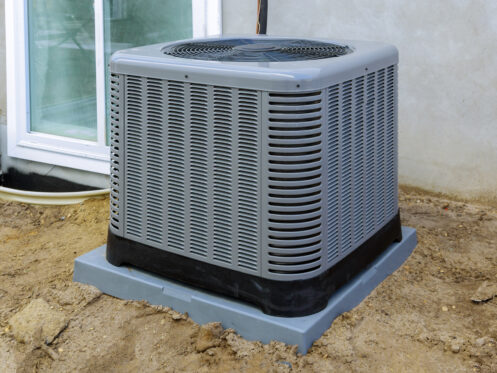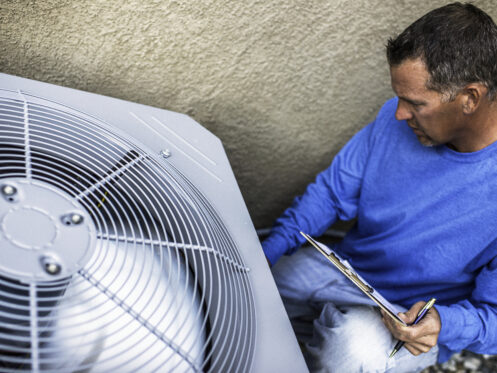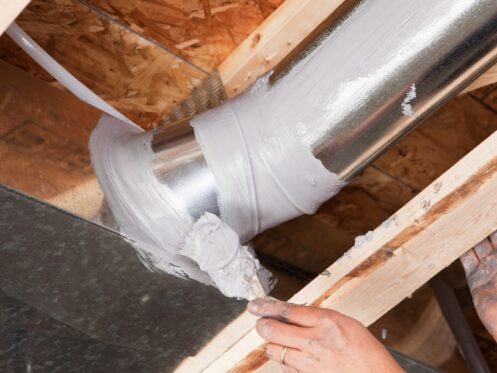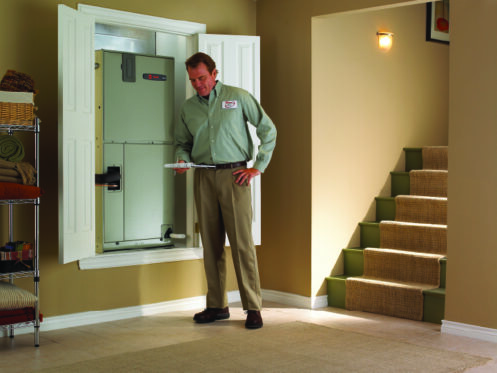Spring is an excellent time to prepare your air conditioner for the sweltering summer temperatures ahead. It is also a good time to address other HVAC system components you may have neglected, like your ductwork. This checklist will give you an overview of the most essential maintenance tasks.
1. Clean or Replace Air Filters
HVAC air filters are a vital part of your HVAC systems that require regular attention. They are responsible for cleaning the air circulating in your home. As they trap dirt and other air pollutants from the air flowing into your HVAC system, the pores get clogged by airborne particles. This debris restricts airflow, and the system has to strain to draw in air, leading to excess energy use, overheating, and sometimes damage to the unit.
Air filters also play a role in maintaining the indoor air quality of your home. They capture allergens and other pollutants that would otherwise recirculate through your HVAC system. Additionally, they prevent debris from entering your air conditioner or heater that may damage their internal parts.
Depending on the air filter type in your system, your spring HVAC system maintenance should start with a thorough filter cleaning session or replacing the disposable variety. Most air filter manufacturers recommend changing out disposable filters at least every three months. The washable kind needs cleaning once a month. However, depending on several factors, you may have to replace or wash yours more often. These factors include whether you have pets and the number of people living in your household. Many homeowners inspect their filters once a month to ensure they are attended to when needed.
2. Clear the Area Around Your Outdoor Unit
Some homeowners cover their HVAC units when storing them in the seasons when they are not in use. If you covered your cooling system in winter, it is time to remove the cover. It is easy to forget this step and leave the cover in place when your cooling system first kicks on for the season. This compromises the efficiency of your system and can lead to damage.
For uncovered units, spring maintenance involves wiping off the dirt that may have accumulated on your unit. You should also remove debris such as trash, leaves, and twigs away from it. Remember to clean out the vents on the sides of your condenser to help with proper airflow.
You may also have to trim bushes and tree branches in proximity to the outdoor unit. There should be at least two feet of clearance at the sides and top of the condenser. This space ensures optimal system performance.
3. Clean the Condensate System
As your air conditioner cools your home, it collects moisture, which turns into water. The condensate system moves this water from your AC system to the outdoors. It consists of a condensate pan, pump, and drain. Moisture not drained away from the inside part of your cooling system creates a conducive environment for mold and algae growth. This growth can build up in the condensate system. In addition, blockages in the drainage system can lead to water leakage and damage to your air conditioner.
An HVAC professional will remove any clogs and clean the drain pipe. They use a pipe cleaner or a brush to remove any buildup. The drain pan collects the water; if it is dirty, they scrub it with a damp cloth.
The condensate pump is found in AC systems that do not use gravity to drain water. When water accumulates in the reservoir, the pump is activated and pumps the water away. The pump can get clogged, and an HVAC expert will check its condition and use a bottle brush or compressed air to remove debris within it.
4. Ductwork Cleaning and Repair
Your ductwork distributes conditioned air throughout your home. However, indoor air contains pollutants that can accumulate in the ductwork and be circulated alongside conditioned air, leading to low indoor air quality. Alternatively, a buildup of dust and dirt in the ducts may reduce airflow through your forced air system. It is suggested that you have your ducts cleaned every three to five years.
While performing duct cleaning, a professional will use specialized equipment to remove debris and biological contaminates. During their visit, they will also identify issues such as leaks and gaps. Among the solutions they may recommend are duct sealing and replacing damaged ductwork. It is to your advantage to follow through with the technician’s advice. The Environmental Protection Agency suggests homeowners lose up to 20% of their heating and cooling through leaky ductwork.
5. Return and Supply Vent Maintenance
Clean air vents help maintain your home’s air quality, ensure proper airflow, and improve energy efficiency. Over the winter, they may have accumulated dirt and debris. You can use a vacuum to remove larger debris and then wipe the vent covers off with a cloth and soapy water.
If deep cleaning is required, use a screwdriver to remove the vent covers. It is safe to soak them in warm, soapy water. Scrubbing the grates with a stiff-bristle brush will remove stubborn grime. While you are waiting for them to dry, use your vacuum to clean the vent up to where your ductwork begins.
After cleaning your return and supply vents, make sure they are all in the open position. You should also ensure that household objects such as area rugs, furniture, and curtains are not blocking the vents.
6. Clean Evaporator Coils
Air conditioning systems have evaporator coils with refrigerant running through copper tubing. They are responsible for removing heat from your home’s air. When dirty, heat transfer is reduced, and the system uses more energy to cool your home. Dirt on the evaporator coils can also contribute to ice formation on the coil surface. This can lead to water leakage in your home and system damage.
Professional HVAC experts may use compressed air to remove loose dirt or clean the coils with a cloth and a mild detergent for persistent grime. They will also check for signs of damage on the coil, which can lead to refrigerant leakage. The expert will repair any leaks they find. They will also refill the refrigerant if necessary because low coolant levels can lead to a host of air conditioner issues.
7. Test System Operation
Your HVAC technician’s spring cooling system maintenance concludes with turning on the system and conducting an operational test. They will check the vents to make sure there is proper airflow to each room in your house. This will ensure that you will have a consistent temperature throughout your home.
Contact the Professionals
At Buehler Air Conditioning & Plumbing, we are a family-owned business that has been taking care of the HVAC needs of Jacksonville Beach, FL residents since 2010. We install, repair, and maintain heating and cooling systems. In addition, we are indoor air quality experts and offer duct cleaning services. Contact Buehler Air Conditioning & Plumbing today to make an appointment with one of our HVAC technicians.




